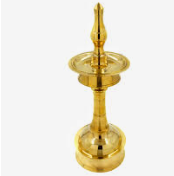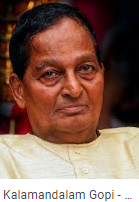KATHAKALI (one of the beautiful performing dance form)
KATHAKALI
Kathakali classical dance form belongs to ramanattam village, kerala, south india. Kathakali means 'katha'- story or tale, 'kali'- performance and art. Its roots are in ancient 'kitiyattam'(classical sanskrit dance drama) and 'krishnattam' (dance- drama depicting stories of hindu god krishna).
Kathakali is a combination of dance, music and acting and dramatizes stories, which are mostly adapted from the indian epics.
Movements in kathakali are influenced by ancient martial arts and athletic tradition. It is basically a dance- drama. Kathakali art form developed in the courts and theaters of hindu pricipalities. The traditional performances were used to be as long from dusk to dawn. Modern day presentations are short as per the time limit of the program.
KATHAKALI DANCE TRADITIONS- Kthakali was traditionally a male dominated dance ( tandav- predominates) and now female are too welcomed in this form. Kathakali is also famous for its huge elaborate costume, amazing makeup style, face masks, and ornaments.
Chakiarkoothu, koodiyattam, krishnattam and ramanattam are few of the ritual performing arts of kerala which have had a direct influence on kathakali in its form and technique. Kathakali represents the element of sky.
Dance in the open air after dawn in front of a brass lamp known as "Nilavillaku".
THEMES- Legend has it that the refusal of the zamorin of calicut to send his krishnattam troupe to travancore, so enraged the raja of kottarakkara that he was inspired to compose the ramanattam.
Mythological themes include ramayan, mahabharat, bhagavat purana etc.
also modern day kathakali dances presents stories and plays of shakespeare.
COSTUME/ MAKE-UP- According to the role of the dancer, his face is colored/ painted. The colors
are made in rice paste with vegetable colors and applied on the face.
The green for noble characters, red(tati) for evil like ravana, black (kari) for hunters and monsters, yellow for women etc. The reddish white portion of the eye is the peculiar feature of kathakali.
Facial expressions, hand gestures and eye movements are also important. Weight of a body is on the outer edges of the feet which are curved anf slightly bent.
Kathakali has similarities with other dance forms like that of the japanese 'noh' and 'kabuki' dance forms have similarities with kathakali.
PATRONES- kathakali began to flourish towards the mid-eighteenth century under the patronage of kartika tirumal rama varma maharaja of travancore and vira kerala verma of kochi.
vallathol narayana menon founded the kerala kalamandalam in 1930 and is credited with revitalizing the classical keralite dance from kathakali.








Comments
Post a Comment